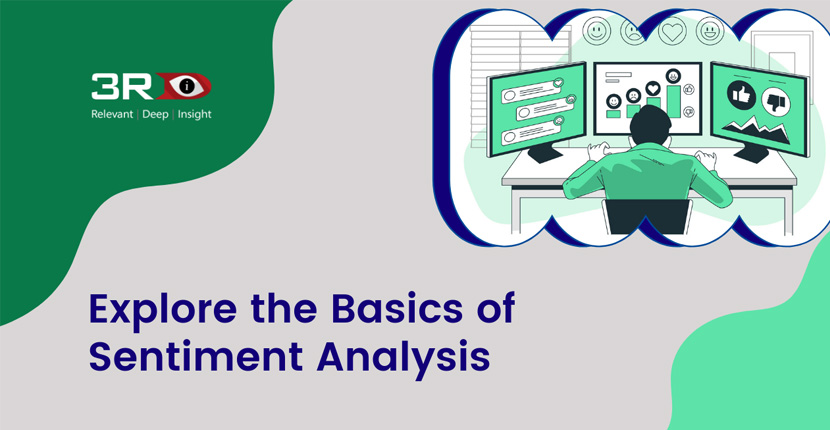
A Brief Introduction to Sentiment Analysis
The capacity of algorithms to interpret text has greatly increased as a result of recent developments in deep learning. Advanced artificial intelligence algorithms used creatively can be a valuable tool for conducting in-depth research. Sentiment analysis is text mining that finds and extracts subjective information from source material, allowing a company to better understand the social sentiment of its brand, product, or service while monitoring online discussions. A new age enterprise search platform like 3RDi Search, powered by technologies like semantics, Natural Language Processing and AI, is what enterprises need in order to implement sentiment analysis effectively.
What is Sentiment Analysis
Sentiment analysis employs natural language processing (NLP) to assess whether information is positive, negative, or neutral. It is frequently used on text information to assist the organization in tracking brand and product sentiment in consumer feedback and for better understanding consumer demands. Natural language processing (NLP), machine learning, and other data analysis techniques are used in sentiment analysis to assess and obtain objective quantitative findings from unstructured and unprocessed textual data.
Sentiment analysis is critical because it allows firms to understand their customers' feelings about their brand. Organizations are able to make better and more informed decisions by automatically classifying the mood behind social media interactions, ratings, and more. There are 3 types of sentiment analysis algorithms:
- Rule-based Systems: Involves the use of a set of manually defined rules for automated sentiment analysis.
- Automatic Systems: Involves the use of machine learning techniques in order to learn from data.
- Hybrid Systems: Involves a combination of rule-based and automated approaches
Types of Sentiment Analysis
The following are the 4 key types of sentiment analysis:
1] Fine-grained Sentiment Analysis
Used to precisely analyze opinions or feedback based on a detailed scale, such as a scale of 1 to 5. It shows a precise polarity in the opinions.
2] Emotion detection
This type of sentiment analysis is able to detect a range of different emotions, from anger to happiness, using advanced machine learning technology.
3] Aspect-based Sentiment Analysis
This is the type of sentiment analysis that helps you figure out the aspects of your business or product that your audience or customers are talking about.
4] Multilingual Sentiment Analysis
As the name suggests, multilingual sentiment analysis is all about analysis of data in multiple languages, making it the most complex of all the 4 types. Multilingual sentiment analysis involves complex algorithms as well as access to various resources.
Sentiment Analysis Benefits
Now that we have learnt about sentiment analysis and its types, let us move to the key benefits that sentiment analysis can bring to an enterprise through effective analysis of data.
- Marketing professionals can use articles, ratings, and social media posts to gather data from customer sentiments toward a given issue or product.
- Sentiment analysis enables marketers to gain more useful and accurate user data, allowing them to design plans for future content and campaigns.
- By merging qualitative and quantitative data, sentiment analysis aids in scaling the ROI of a campaign.
- Sentiment Analysis helps advertisers turn a negative client feedback into a positive one, allowing them to take their brand to new heights.
- Sentiment analysis encourages PR professionals to pay attention to brand reputation. It also aids businesses in determining whether or not each message sent to clients is meaningful and insightful.
There's never been a better time to emphasize the usage of sentiment analysis, be it huge corporations or small businesses. To leverage the power of sentiment analysis with a new age Enterprise Search platform, visit www.3rdisearch.com/ or drop an email at info@3rdisearch.com and our team will get in touch with you.